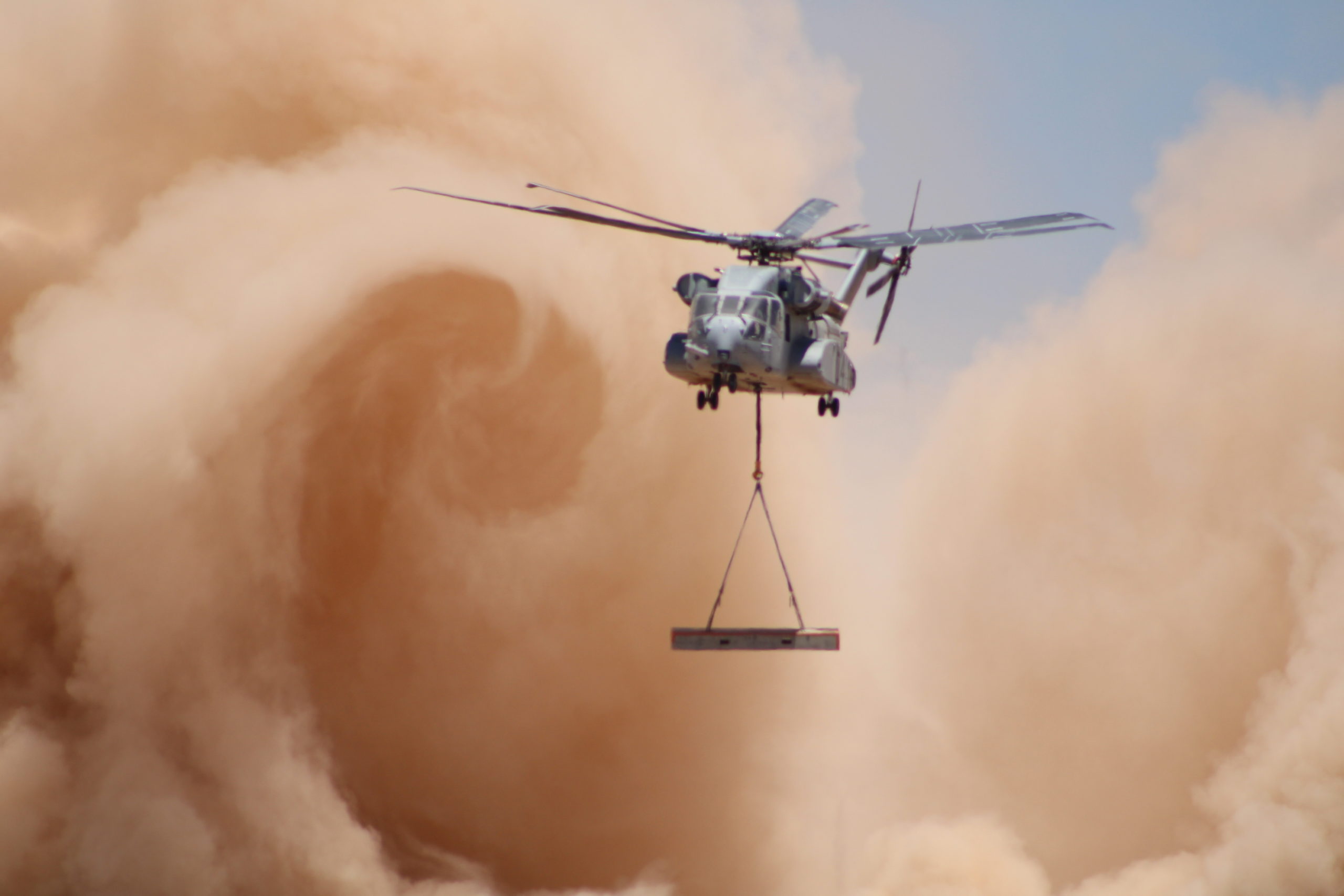Mobility, Distributed Force and Lift: The Importance of the CH-53K
The U.S. and a number of its allies are emphasizing ways to enhance their ability to distribute their forces for better survival and agility against peer competitors. And with the arrival of cheap weapons alternatives such as a variety of drones, even non-peer competitors have a capability to strike concentrated force locations and bases.
But force distribution depends on the mobility of the force. This can be provided by the inherent character of the distributed force or force cluster – operating rotorcraft or tiltrotor craft and a vertical launched system like a Harrier or a F-35B – or by lift carrying the various force elements to their location from which to operate.
Lift rests on coming by the sea and various means to go ashore, fixed wing lift which generally requires a prepared airfield or by rotorcraft or tiltrotor craft. And another evolving reality is that autonomous systems of various sorts are part of this force distribution effort as well and can either provide lift or be part of the combat cluster as a weapon system, with consideration that ISR and C2 are weapon systems.
For example, in a recent interview which I did with LtGen Heckl he pointed out that the XQ-58 Valkyrie is of interest to the USMC.
“It is does not need a base. It can be launched from the back of the truck. It has good range and can carry a lot of payload. And its fully autonomous. The reason it has decent range and can carry a decent payload is that it is unmanned. Not only does human weight not come into play but also all the equipment which humans require for operating an air asset – environmental control systems for example. I think we are at the boundary or the edge of being able to incorporate autonomous systems into our force transformation.”
But to put that system in play in many circumstances – notably the advantage of using multiple launch and aim points – it is necessary to take the weapons package to a desired location which presumably is not a usual basing option which is frequently used. The goal is to use new “airfields” which would be simply locations from which it could be launched.
To do that requires lift of the system and the operators. And again, mobility is linked with lift.
That is why lift is the key infrastructure for force mobility and force distribution. This provides a whole new future for lift assets.
It is into this context which the CH-53K is entering. When a new platform enters a force as that force is evolving will provide the context with which that system itself will evolve. So the CH-53K is being birthed in the context of the focus on force distribution.
What then might be the interaction between the CH-53K and lift mobility in the evolution of the distributed force?
I will consider that question in the next article in this series.
Featured Photo: The CH-53K King Stallion in Degraded Visual Environment (DVE) testing at Yuma Proving Grounds, AZ. The heavy lift aircraft is the most powerful helicopter ever built by the United States government. July 17, 2020. Credit: Naval Air Station Patuxent River

